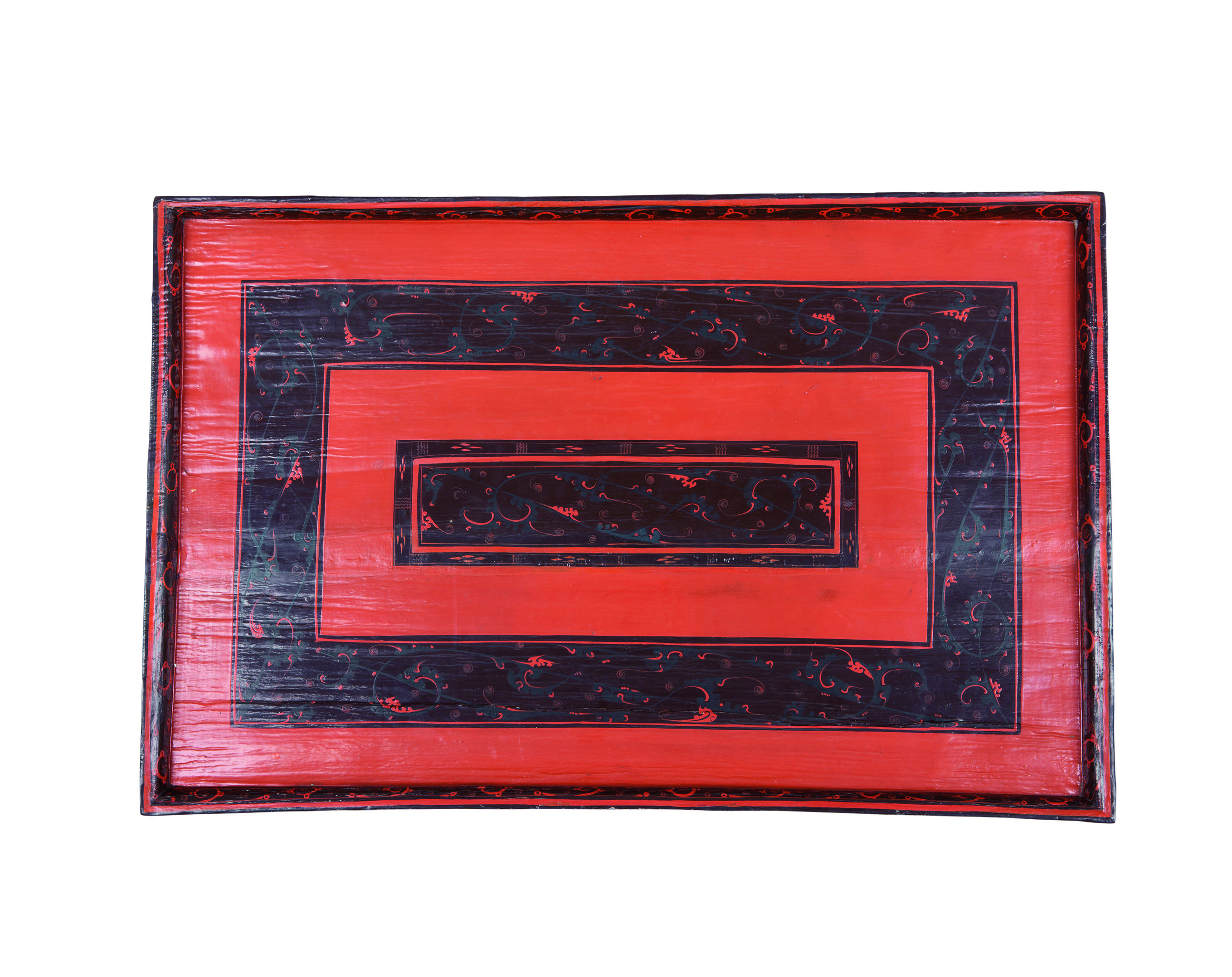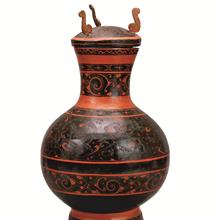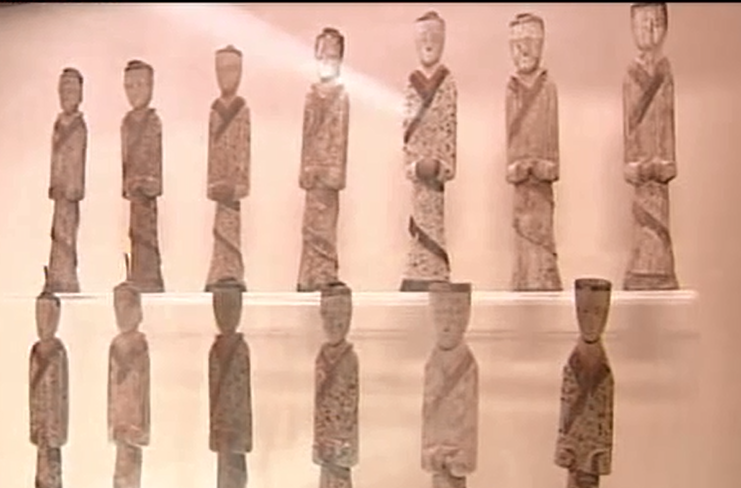Dimensions: Overall height: 5cm; length: 78cm; width: 48cm
Origin: Unearthed from Han Tomb No.1 at Mawangdui, Changsha in 1972
The basis of this tray was made by using such methods as shaving, whittling, hewing and chiseling, therefore it is called hewn basis. Two lacquer trays of similar shape and design were unearthed from Han Tomb No.1 at Mawangdui. The inner surface was coated with vermillion and black lacquer, with graceful vermillion and grayish green cloud design painted on the black lacquer coating. The three Chinese characters written in vermillion lacquer “Dai Hou Jia” (the household of the Marquise of Dai) indicate the owner of this tray. One of the two trays was found in the northern trunk of the outer coffin chamber. When it was unearthed, it still had five intact small lacquer plates on it and on these plates were carbonated or rotten food such as beef steak. There was also one set of bamboo shish kebab sticks, two lacquer goblets, one flanged cup and a pair of chopsticks. Interestingly, the artifacts buried together with the two trays in the trunks are: with the tray on the west side are lacquer screen, lacquer ji-table, embroidered pillows and some cosmetic stuff; with the tray on the east side are figurines of servants, singers and dancers and other such “servants” who either looked after or entertained their mistress, and on the walls of the trunk chamber were hung silk curtains. Without doubt, this trunk chamber served as an imitation of the daily life of the wife of the Marquis of Dai, and this lacquer tray was a piece of furniture placed in front of her seat for holding food.







